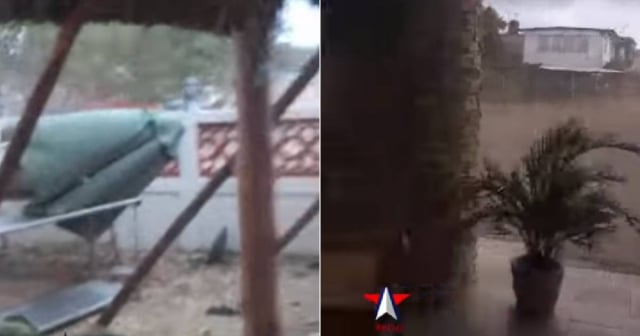The meteorologist José Rubiera explained this Monday that the tornado that hit Havana It is the first recorded in 500 years of the capital of Cuba and very similar to what happened in 1940 in Bejucal.
"First time in five hundred years of life of our capital we have known it," Rubiera said in the weather report broadcast this Monday on state television.
However, in Cuba there had been a atmospheric phenomenon "very similar." On December 26, 1940 in Bejucal, in the province of Mayabeque, 13 people died along the route of one of seven kilometers with a width of 500 meters.
He Havana tornadoRubiera specified, it occurred due to "a situation of great atmospheric instability such as the arrival of the cold front and a strong flow from the south with a lot of heat and also humidity coming from the Caribbean Sea."
The specialist classified the event as "unusual and very rare", but "sometimes the conditions are met and it happened last night."
Unlike the one in 1940, the Havana tornado had a path of 11.5 kilometers, with a travel speed of 42.5 km/h. "From the damage we have seen, it can be classified as an EF4 on the improved Fujita scale, around 300 km/h," Rubiera said.
The renowned meteorologist presented the trajectory of the tornado through Havana, where arose around the Sports Casino, "incipient, but where the winds really became strong was in the area of Antillana de Acero, crossing parts of 10 de Octubre and Mayía, continuing towards the southern part of the Bay, then Regla, Guanabacoa, Berroa and already a lot weakened to the sea," he noted on a map.
The powerful event toured the Cuban capital in about 16 minutes, started at 8:26 and left at 8:42, he detailed.
"Quite quickly, that's why people said, well, that noise was heard as if it were that of an airplane. That big noise was the wind"
According to Rubiera, for a tornado to form, a cloud must descend to the ground with rotating winds. "Our farmers talked about the tail of a cloud, but that is when it does not reach the ground, when it reaches the ground it is called a tornado," he clarified.
In statements prior to Latin PressRubiera explained that this Sunday's tornado is preliminarily an EF4, with winds between 266 and 322 km/h, "because there have been downed trees, damaged masonry and plate roofs, cars that have been overturned, who have been dragged away."
"The Fujita Pearson scale and the augmented Fujita scale, which is the one being used now, differ in that one has an F and the other EF," Rubiera told this state agency.
Since 2007, one scale replaced the other with small variations in the measurement of wind speed, but with greater value to the disasters caused that can be classified as up to 28, according to the recommendations of the specialists of the University of Texas, in the United States, one of the countries where these types of catastrophes suffer the most.
Until now there is at least four confirmed deaths after the tornado in Havana and the number of injured rises to 195, according to official sources.
Photo: Screenshot.
What do you think?
COMMENTFiled in:
